Advertisement
These fish are critical to New England, and they're disappearing
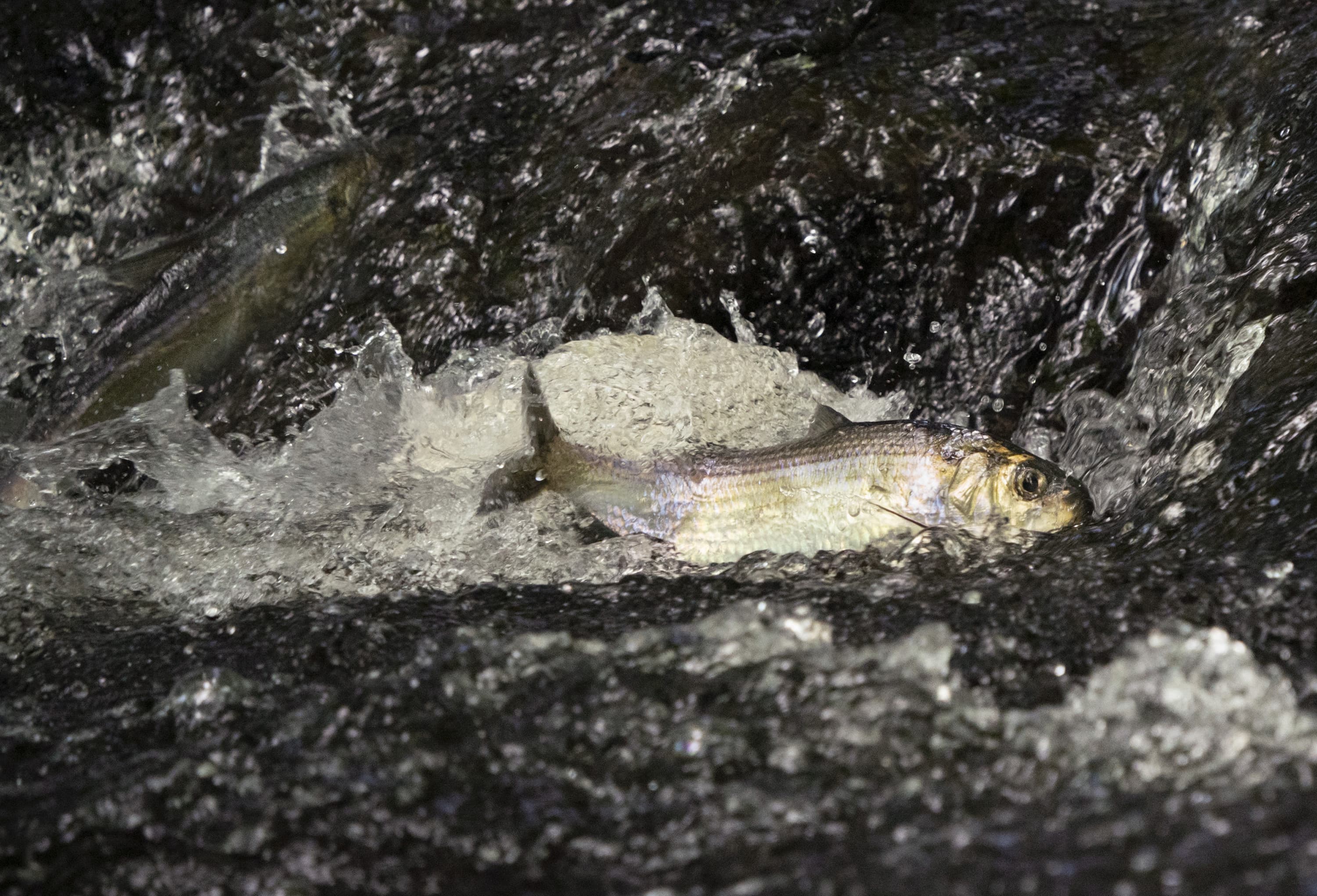
Eric Hutchins waded through the brook's shallow water, his eyes locked on the water swirling between his thigh-high rubber boots.
After some consideration, he plunged a short shovel into the gravelly bottom.
“Right there,” he yelled, hoisting a dripping shovelful of sand to reveal a slim, wriggling critter no more than several inches long, before depositing it into a plastic tub for closer inspection.
"They look like snakes, but they are absolutely fish."
The fish he caught that day in Rockport was an American eel, a fish that's critical to fresh and saltwater ecosystems. Eels and other species help sustain predators of all kinds, from birds and semi-aquatic mammals, to fish like trout and striped bass that grace our dinner table. But the American eel, like herring and shad, are in decline thanks in part to human activity. While whales and polar bears capture the popular imagination, it can be easy to overlook the fates of these less glamorous creatures. But losing these species would have a profound effect in New England and beyond.
Each year, baby eels — known as elvers — embark on a treacherous journey across open ocean. Born in the Atlantic's Sargasso Sea, a seaweed-rich zone bounded by the Bermuda Triangle, they ride Gulf Stream currents over 2,000 miles to the North American coast.
From there, they fight their way up tributaries to fresh water lakes and ponds, where they can live for up to thirty years and grow several feet long. Those lucky enough to survive adulthood eventually return to the Sargasso Sea to spawn and die.

Juvenile eels may be tiny, but they're remarkably resilient, able to survive in open air for hours at a time by breathing through their skin.
"They actually migrate through the sediments and through the weeds and under rocks; they love the moss," Hutchins said. "So what I will do is flip over rocks and cobbles and see if there's any eels wiggling in it."
Hutchins, a habitat restoration biologist with National Oceanic and Atmospheric Administration, lives and works on Cape Ann. Along with a small group of volunteers, he monitors the baby eels migrating upstream at Mill Brook between spring and fall. In a year, sometimes they'll document well over a thousand elvers.
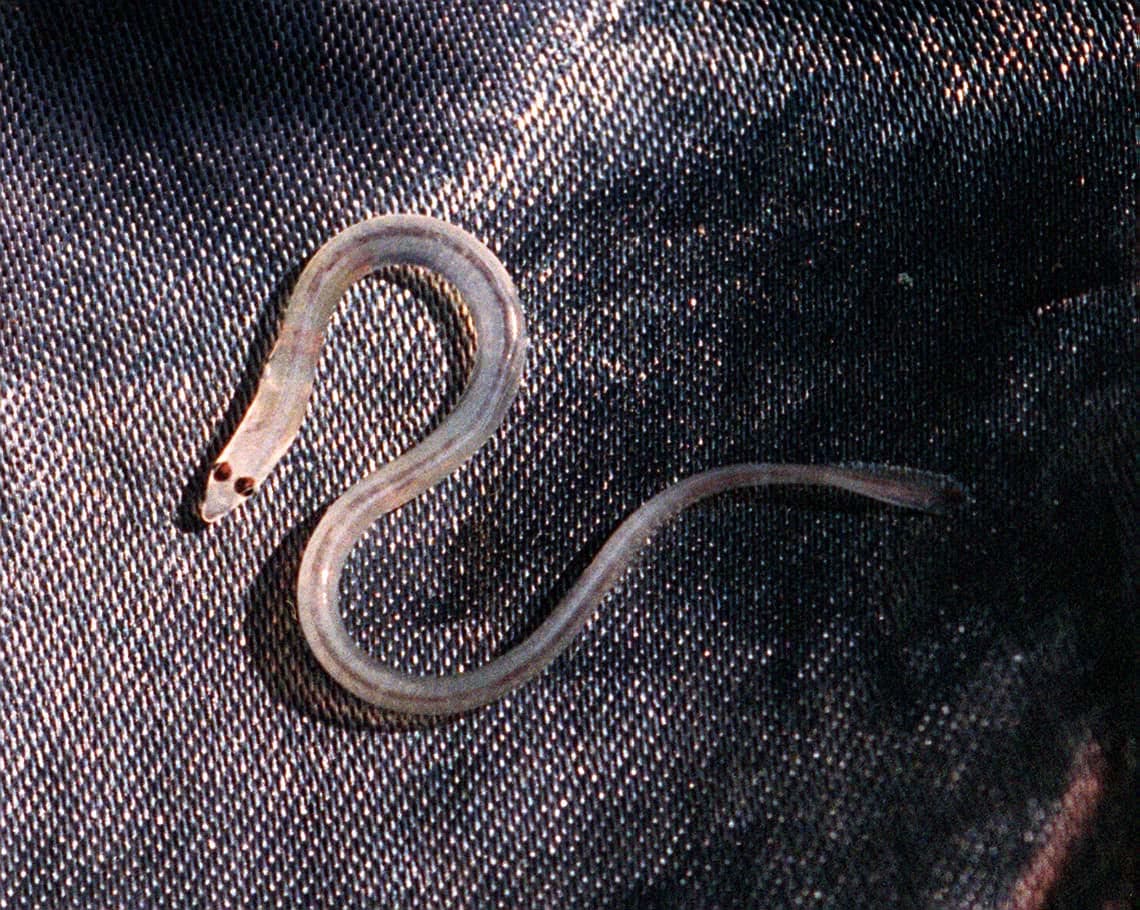
Half a century ago, fishermen harvested millions of pounds of American eels annually up and down the Atlantic Coast. By 2013, however, researchers estimated the population had dropped by half.
Experts suspect overfishing and coastal development have played a role in the decline, along with eutrophication — when nutrients from sewage and fertilizers choke the oxygen from ponds and streams.
"Some of the runs into the Gulf of Saint Lawrence have crashed," Hutchins said. "There used to be tremendous fisheries up there, both for baby eels and adults, and in some of the runs up there, it's almost zero now."
Along with hardships wrought by humans, eels face predators of all kinds.
"Everybody will eat these," Hutchins said. "The fish: bass, pickerel; all the birds: the kingfishers, the herons. Otters will eat them. So they're an important food source in the ecosystem ... They lean more towards a freshwater ecology, but they're clearly supporting the saltwater ecology as well."
Advertisement
As if on cue, a grackle swooped down, plucked a baby eel off a slimy rock and swallowed it whole with a few shakes of its beak.
Another fish fundamental to fresh and saltwater ecology is the river herring.
Alewives and bluebacks are migratory herring that range along the East Coast from Florida to Maine. Whereas eels are born in the ocean but live in freshwater, river herring live in coastal waters and only venture inland to spawn.
In pre-Columbian and colonial times, river herring and eels were a key food source for natives and European settlers alike, as well as fertilizer for crops like corn. Native Americans built traps known as weirs, corralling thousands of herring each spring when Massachusetts rivers became swollen with fish.
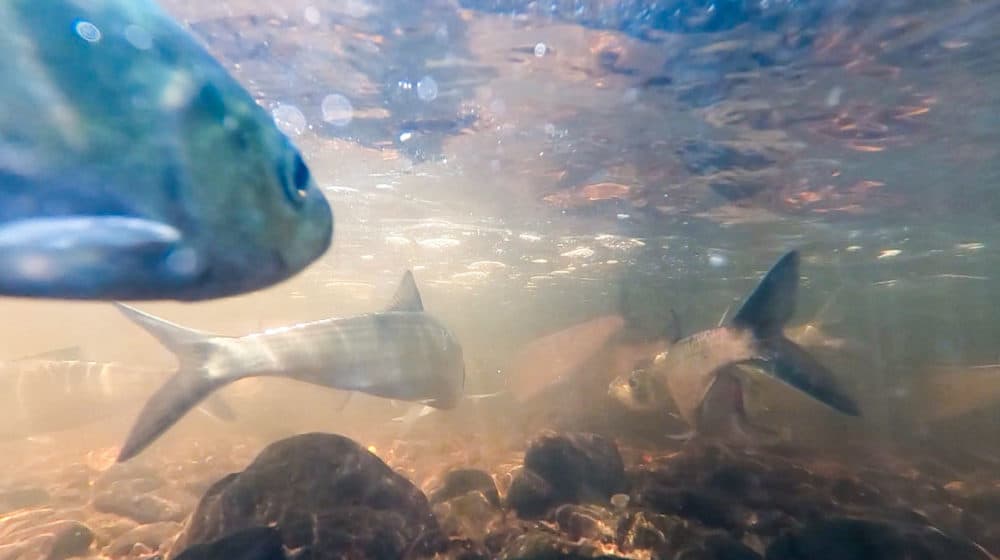
As with eel, river herring populations began to crash in the 1980s, coinciding with advances in commercial fishing techniques and new construction along the coast.
But one of the most overt structural threats to riverine life is more historic: dams.
Massachusetts is home to about 3,000 dams, with many built in the 19th century for water power, reservoirs, or flood control.
"A dam in a river is like a blocked artery; it's like a heart attack," said Robert Kearns, a climate resiliency specialist at the Charles River Watershed Association. "It degrades the water quality behind it; reduces the dissolved oxygen which fish rely on to breathe and to live ... and creates a habitat that's better for invasive species."
Kearns and his colleagues support removing disused dams to restore watershed, but that's easier said than done.
Take the Watertown Dam. The dam's location marks the historic end of the Charles River tidal estuary, a site where Native Americans and colonists built fish weirs before downstream construction stopped the tides from reaching Watertown.
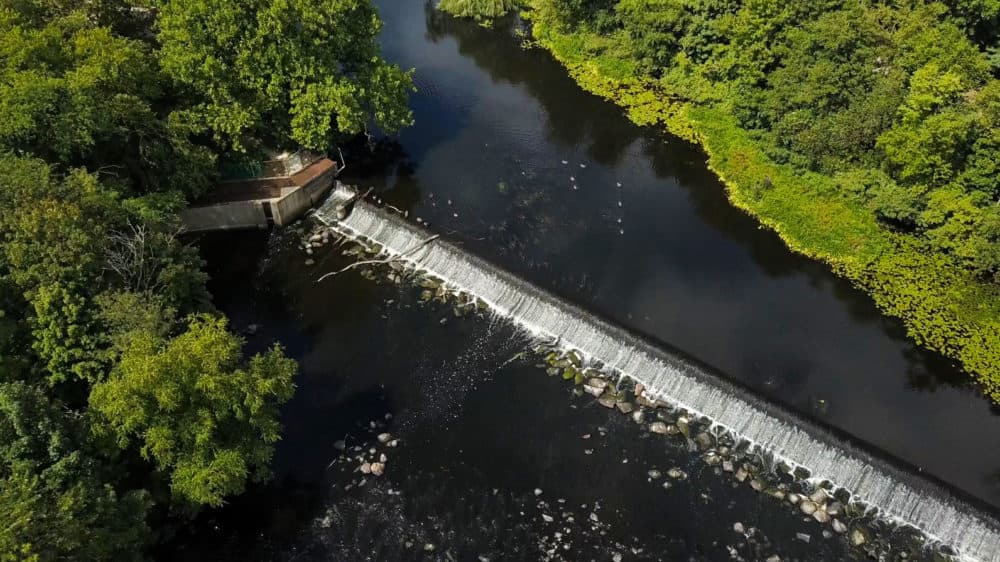
Today's dam dates to around 1900 and once generated electricity. Now, the dam is defunct and should be removed according to Emily Norton, the watershed association's executive director.
"It's harming the plants and animals that rely on the river," she said. "But it's not serving a purpose for people."
"A dam in a river is like a blocked artery; it's like a heart attack."
Robert Kearns
But the dam's owner, the state Department of Conservation and Recreation, disagrees.
Removing the Watertown Dam would cause significant changes in the watercourse and in the sediment characteristics of the river, according to the agency. The dam has also allowed for the creation of more than 100 acres of recreational space, including the Charles River Greenway and parkland flanking the manmade Charles River Basin, which stretches 11 miles downstream to Boston.
Also active in the push to remove the Watertown Dam is Kristen Wyman, a citizen of the Native American Nipmuc Tribe.
“In today's world, we're realizing that a lot of industry and what Western civilization would consider improvements to the landscape, actually were detrimental to the landscape,” she says. "When we see these populations start to decline, it's really a reminder of our struggle as native people. And when we see them doing well, we know that our people will do well."
A 2021 study published by another state department, the Division of Ecological Restoration, said removal of the Watertown Dam would improve "ecological continuity" in the environment, but "a final decision about whether it is feasible to remove the dam would require further analysis."
If you can't knock a dam down, another solution is to build a fishway over it.
Fish ladders are ramp-like structures that allow water to rush through dams. When built correctly, a ladder enables fish to swim up and over barriers that would otherwise stop them in their tracks.
The ladders along the Mystic River have been a boon to fish spawning along the waterway.
“They cross under the Tobin Bridge from Boston Harbor," says Andy Hrycyna, a scientist at the Mystic River Watershed Association. “They come up through Somerville and Medford, wanting to get as far upstream as they can to spawn."
A 20-foot-high historic dam connects the Lower and the Upper Mystic Lakes in Medford, where each spring hundreds of thousands of herring surge into the upper lake to spawn — a near impossibility without assistance from a fish ladder, according to Hrycyna.
The Mystic Dam fish ladder was completed in 2012.
"At that time, the estimate was that 200,000 fish used the Mystic Lakes fish ladder based on these volunteer observations," he said. "In 2015, the number doubled to 400,000."
In 2019, an estimated quarter of a million herring traversed the ladder into upper Mystic Lake, according to video tracking and volunteer counts.
"People have recorded as many as 2,500 fish passing in 10 minutes," Hrycyna said. "We give them little clickers to count as a fish goes by. And they end up not being able to click that fast, having to estimate by groups of ten."
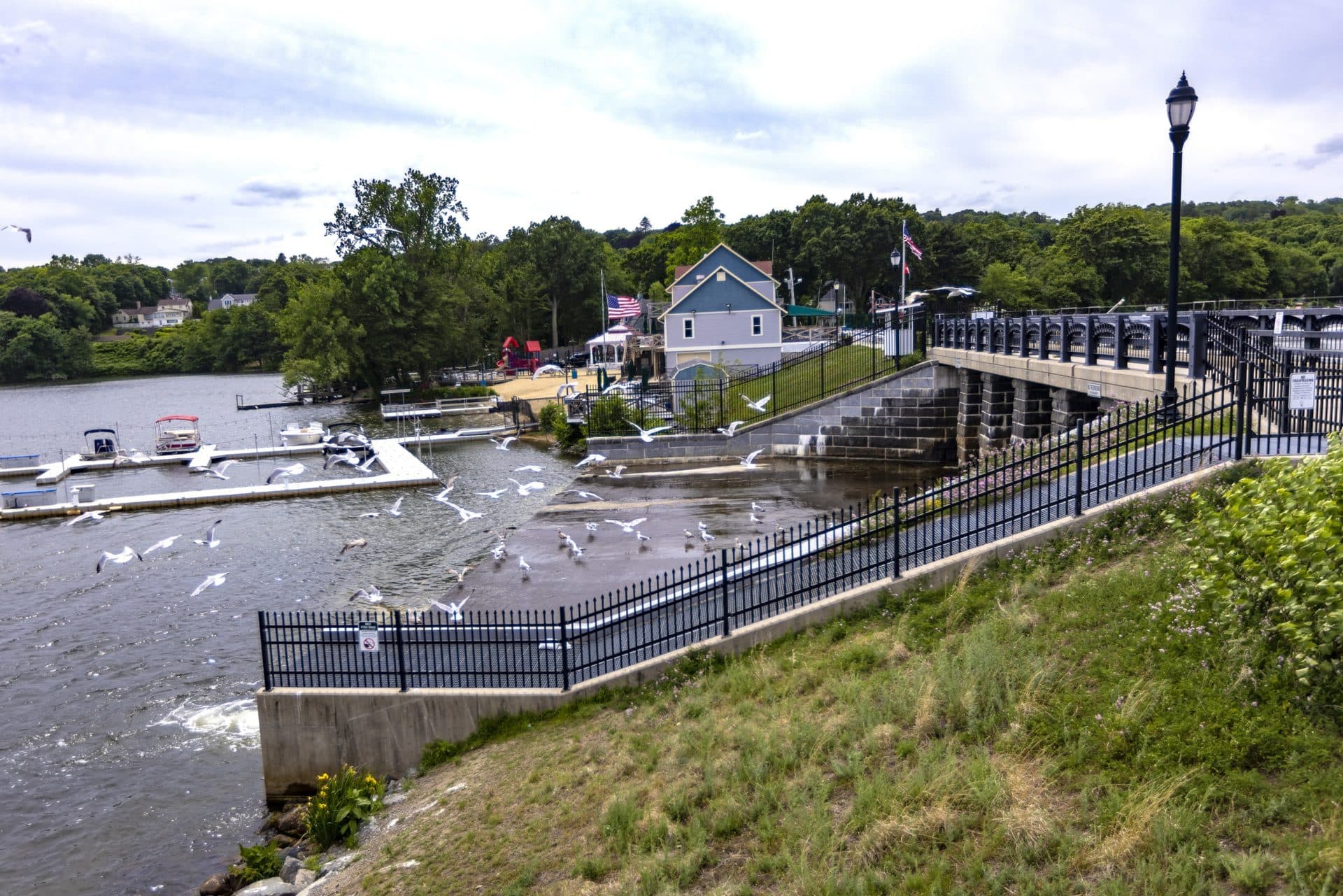
In early June, the Mystic Dam area was inundated with birds of all kinds: herons, gulls, cormorants and even a bald eagle. They were all focused on the bounty of fish in the waters below. Those tiny herring also feed trout and bass.
"There's also a lot of evidence that reintroducing herring into lakes they've traditionally had access to actually increases the abundance and fitness of sport fish," Hrycyna added. "When these adult fish arrive, they lay hundreds of thousands of eggs — millions of eggs — and there are millions of juvenile fish in Upper Mystic Lake by the time these adults leave."
A few miles upstream in Woburn, Horn Pond marks the next big body of water in the Mystic River Watershed. There, a dam without a fish ladder tells a different story.
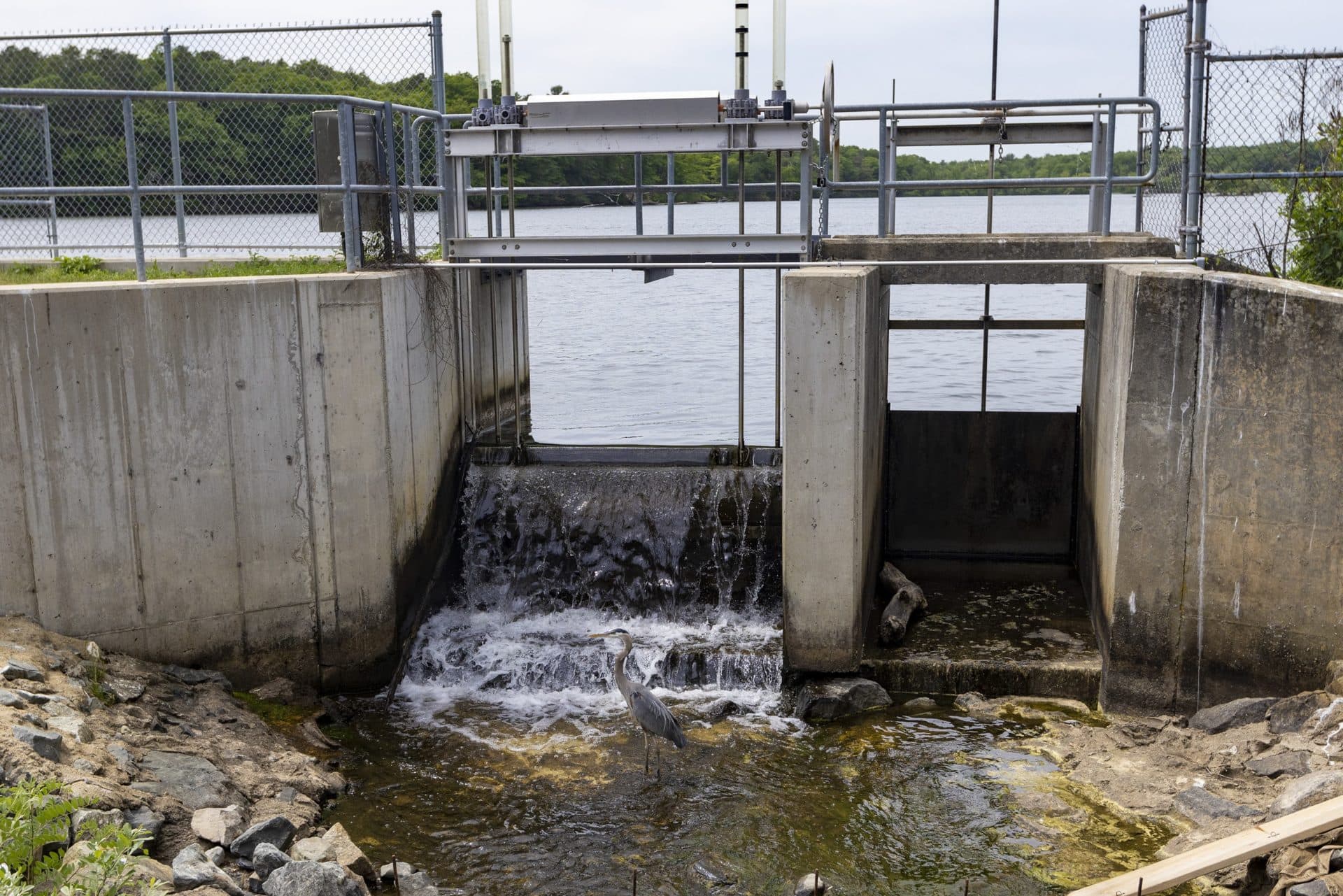
The Horn Pond aquifer's water quality is pure enough to provide drinking water to surrounding communities — ideal conditions for spawning herring. But at just 5 feet high, it's insurmountable for the vast majority of herring trying to get past it.
Similar to salmon, and for reasons that aren't fully understood, river herring are drawn to spawn in the river of their birth and will push upstream, even when there's nowhere to go. At Horn Pond in June, a writhing mass of fish had gathered in the shallow pool below the dam, flinging themselves against rocks and concrete in a futile attempt onward. The living throng was sparsely dotted with bloated bodies and the stink of dead fish hung in the air above.
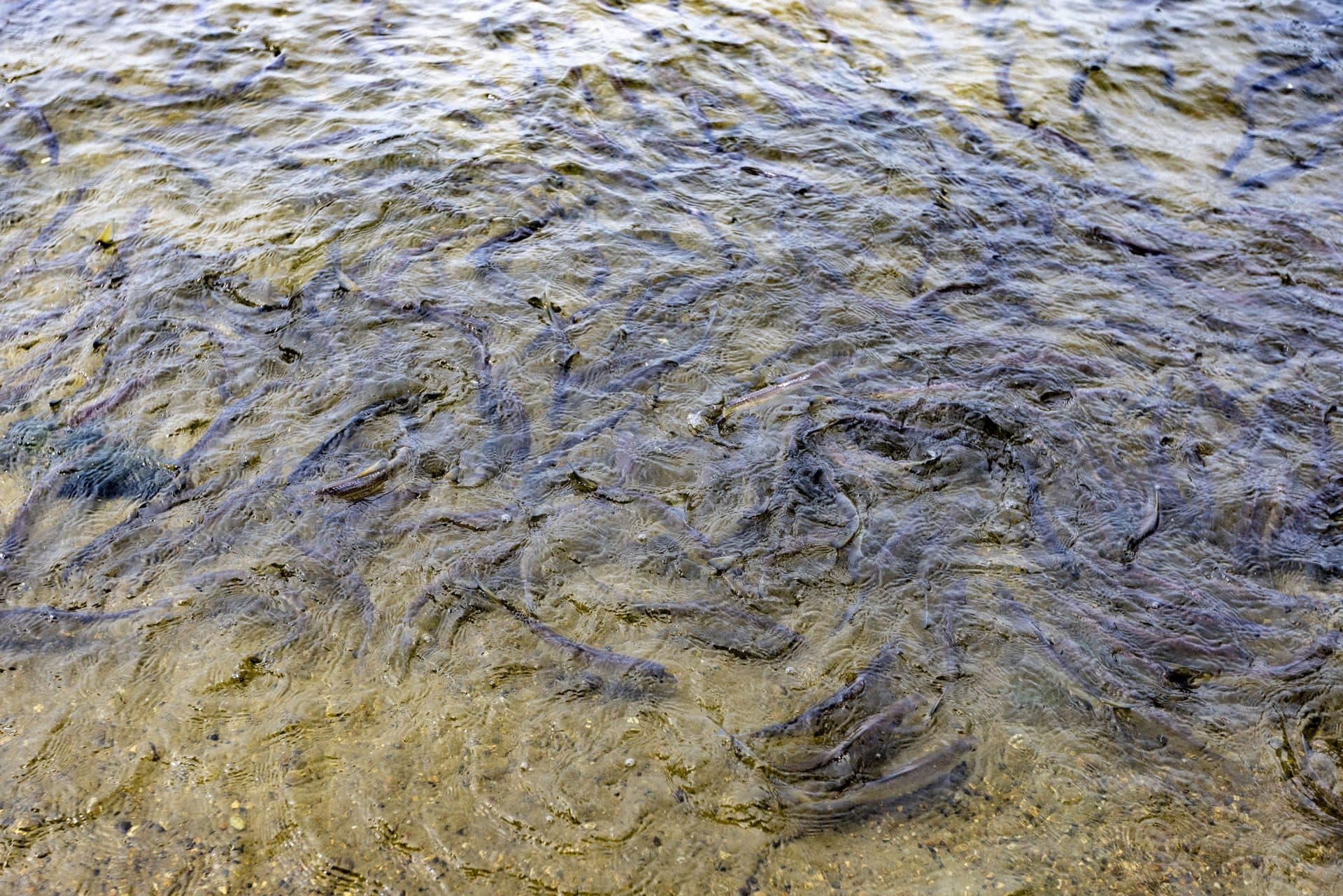
“Some of them try really hard and you'll see, somewhat poignantly, get caught in rocks and die,” Hrycyna said. "But most of them, having reached an impasse, will turn back to spawn in downstream waters."
A few do get lucky with human help: Sometimes volunteer bucket brigades gather to scoop fish from the pool with nets and buckets, lifting them over the dam and into the pond above. But, Hrycyna says, "That turns out not to be the most efficient way to get hundreds of thousands of fish up from one to the other."
Federal money has been approved for a new fish ladder at Horn Pond, and Hrycyna hopes it will be installed within a few years.
“Folks at the Division of Marine Fisheries estimate that if we collectively can get fish here, and we will, the total fish run may exceed, in good years, more than a million fish," he said. "That'll make it one of if not the biggest herring runs in Massachusetts.”
Fish ladders are not a cure-all, however.
Despite relative success stories in some Massachusetts watersheds, the overall picture is discouraging, according to Massachusetts Marine Fisheries biologist Brad Chase. While there are exceptions to the rule in every region, he said the overall picture along Cape Cod and Buzzards Bay is particularly discouraging.
Even along the Mystic, the number of migrating herring has regressed since its high in 2019.
One factor could be the 2016 drought that lingered into 2018 — fish can't make it up or downstream if the riverbed is dry — but Chase said more research must be done before definitive conclusions can be reached.
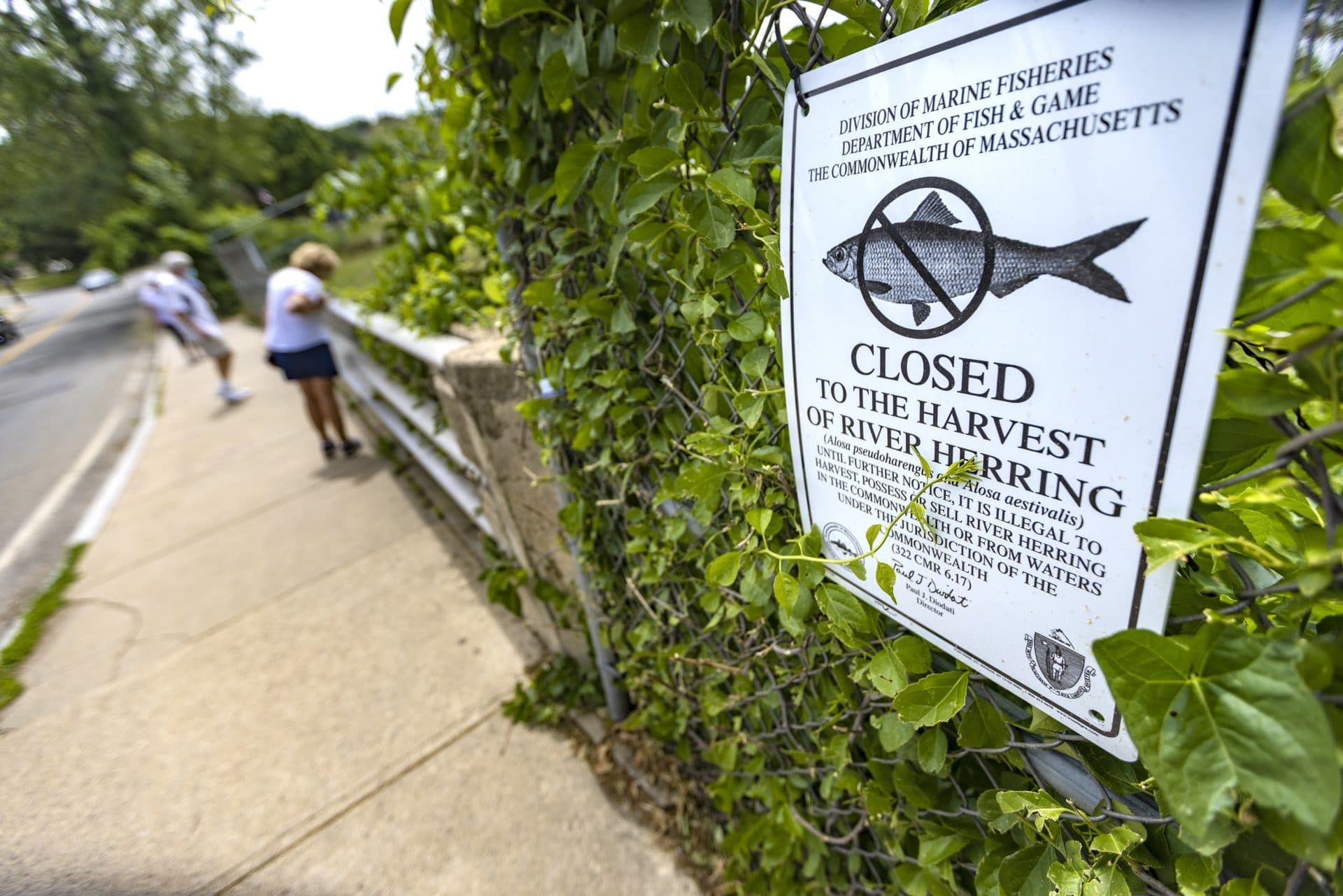
And fish ladders aren't a one-size-fits-all tool for every species. Eels, for example, avoid rushing water and traverse overland where possible, so a different style of fishway is required.
Back on the Charles River, the Watertown Dam is also host to a fish ladder. But Norton said it's "ineffective," particularly when it comes to helping a third type of fish: the American shad.
Sometimes referred to as "the fish that fed the nation's founders," shad, like river herring, migrate into freshwater to spawn. But shad are larger than herring, and Norton said females cannot make it up and over the ladder.
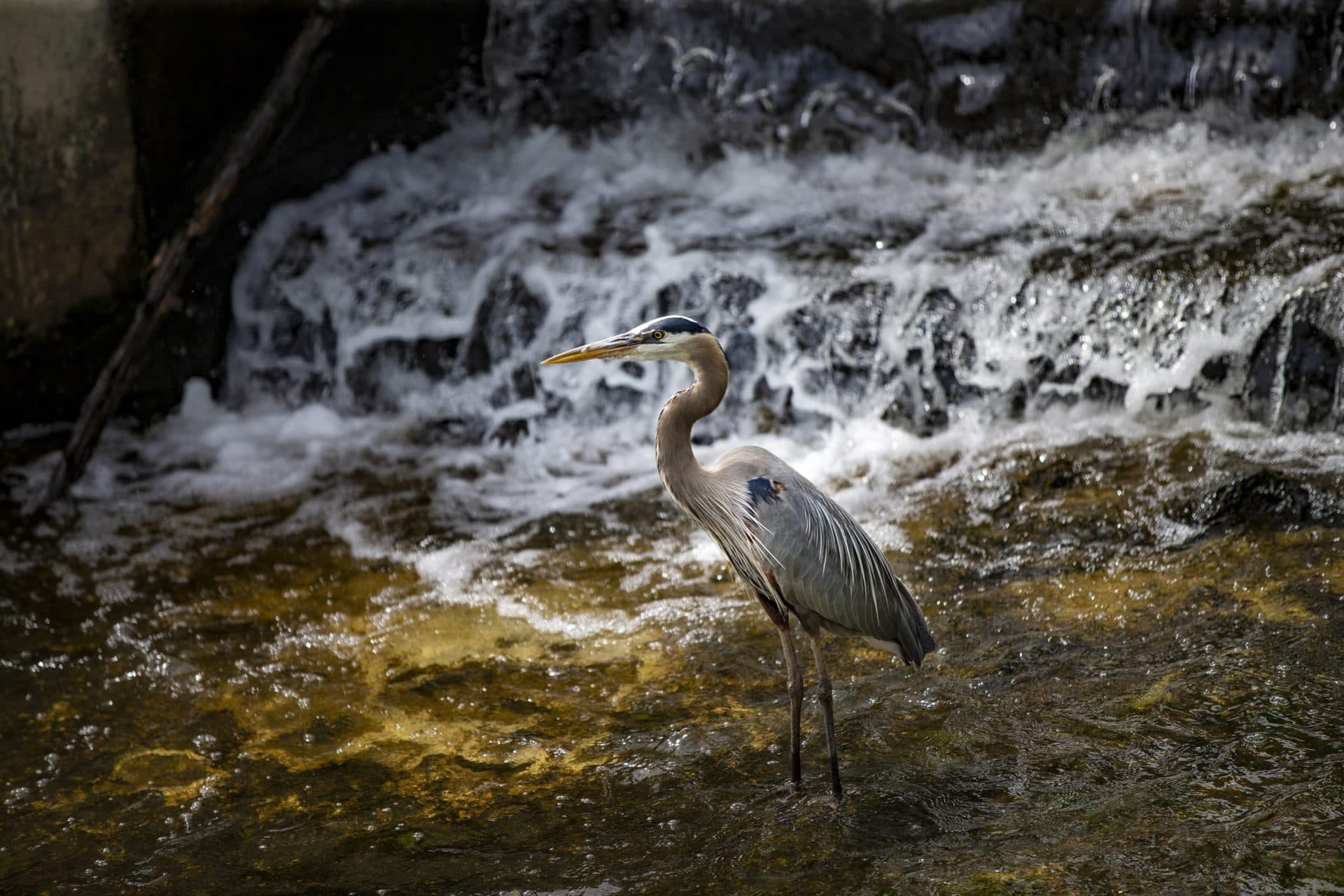
According to the World Economic Forum, the long-term survival of fish like eels and herring is important to all humans, because it directly impacts the food chain.
“They really feed everything: species of fish and wildlife that we care about, such as striped bass, cod, bluefish," Chase said. "They're also just ecologically important in general. They bring nutrients in from the ocean that are important for the ecological health of these watersheds."
Beyond commercial fishing, a report by the American Sportfishing Association found saltwater sport fishing generates over $500 million dollars a year in sales, wages, and taxes in Massachusetts.
But amid the reality of human-made climate change, the future of the herring and the eels, on which so much depends, remains very much in question.
This segment aired on July 5, 2022.

